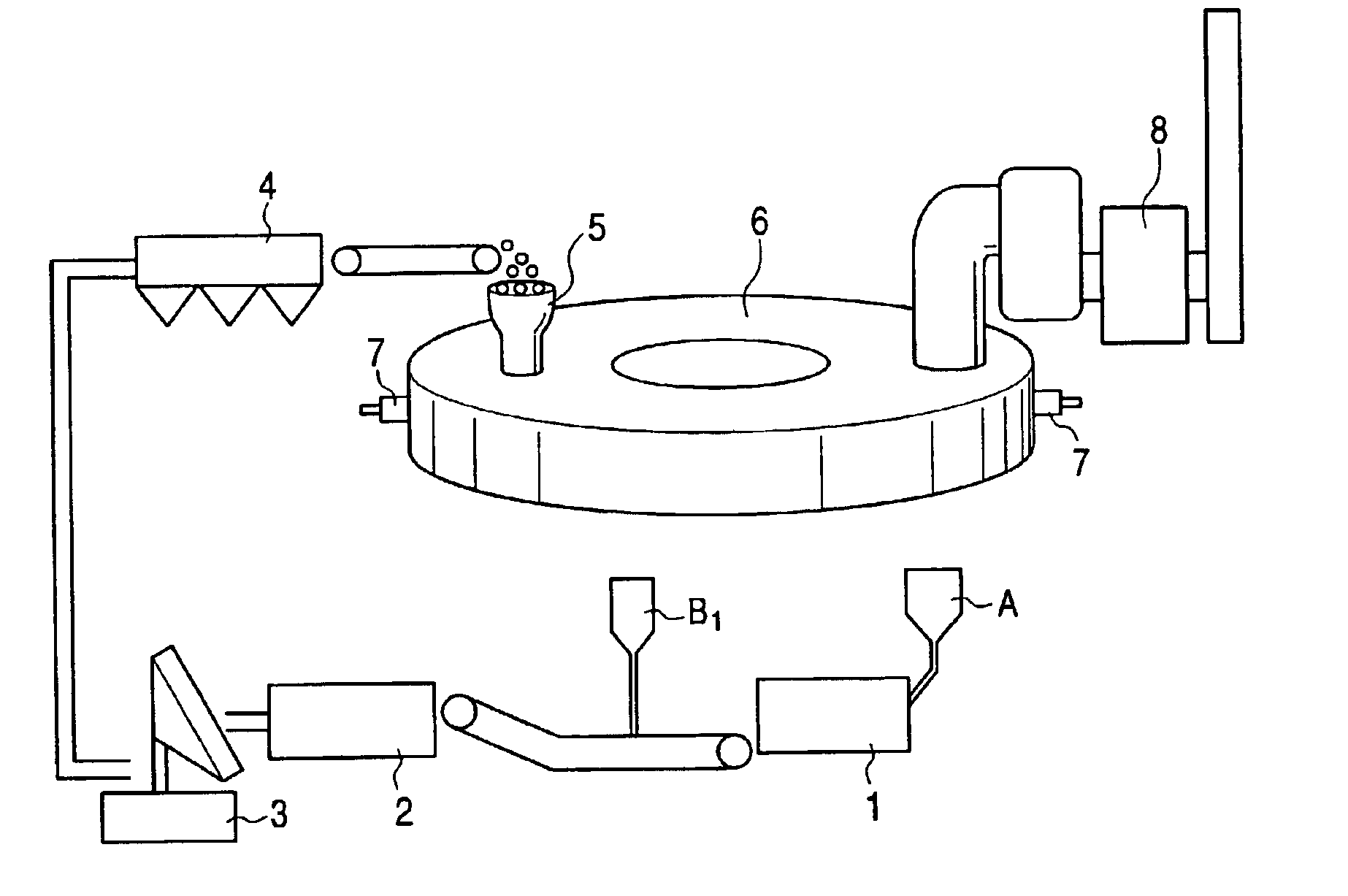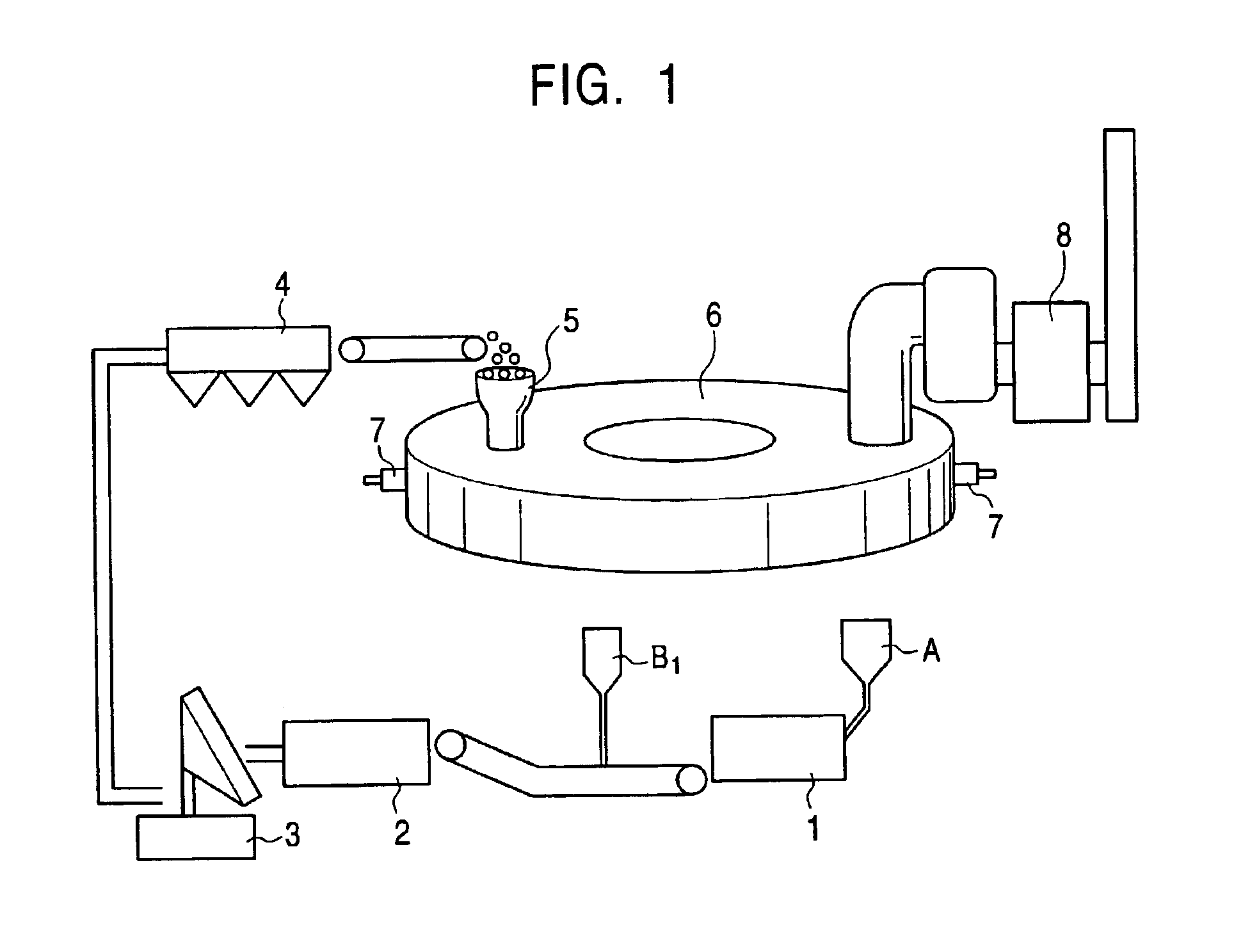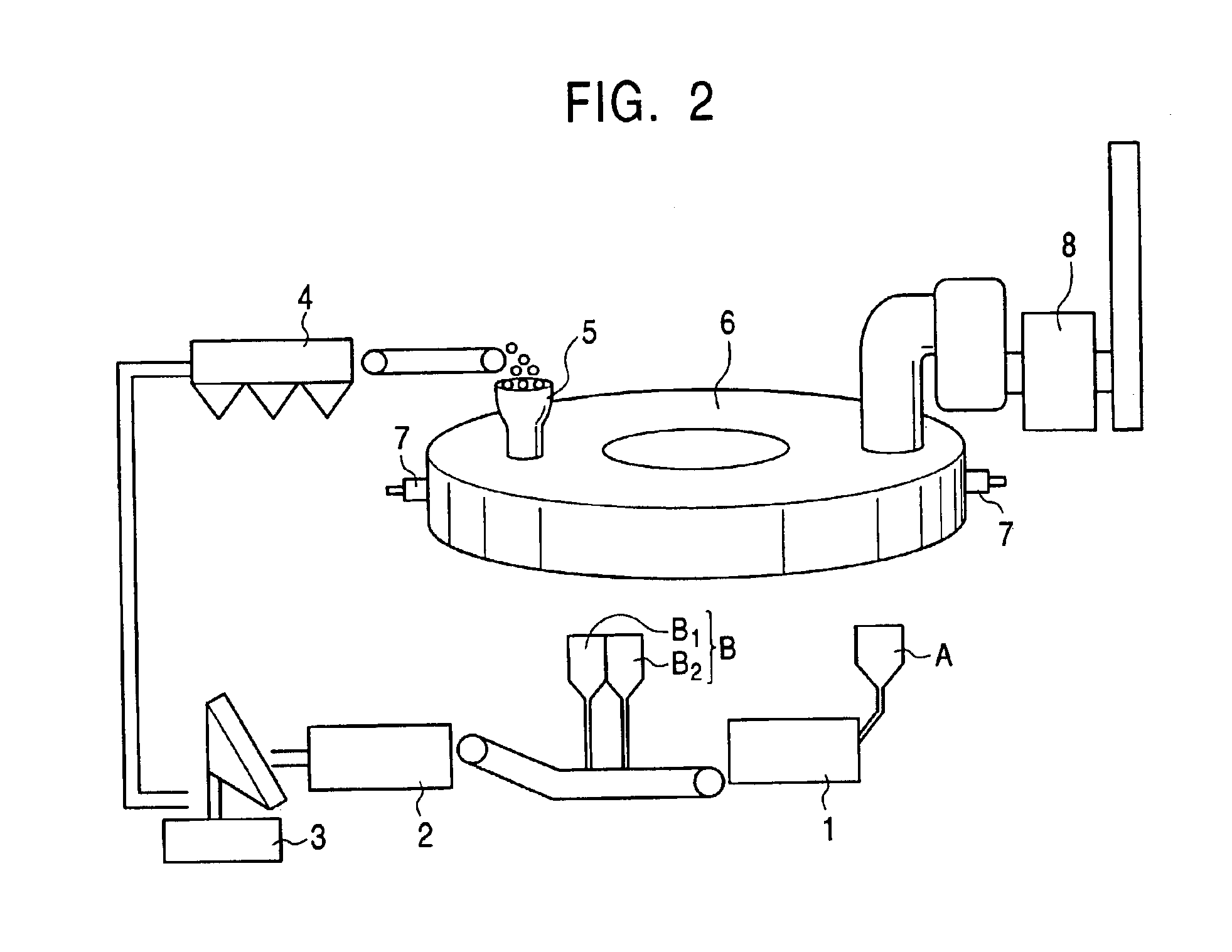Method for making reduced iron
a technology of reduced iron and reduction iron, which is applied in the field of making reduced iron, can solve the problems of significant pulverization, difficult handling of the resulting reduced iron product, and pellet breaking into chips, and achieves the effects of reducing iron products, high zinc removal rate, and high metallization degr
- Summary
- Abstract
- Description
- Claims
- Application Information
AI Technical Summary
Benefits of technology
Problems solved by technology
Method used
Image
Examples
first embodiment
[0037]FIG. 1 is a schematic diagram showing a plant by which a method of the present invention for making reduced iron (a method for making crude zinc oxide) using blast-furnace sludge is implemented.
[0038]As has been previously described, since blast-furnace sludge having a high water content may contain a large number of pseudoparticles, the blast-furnace sludge is preferably disintegrated in advance. Referring to FIG. 1, blast-furnace sludge A containing pseudoparticles having a diameter exceeding 1 mm is disintegrated using a disintegrator 1 so that the ratio of the pseudoparticles to the mixed material prepared as below becomes 50 percent by mass or less (disintegrating step). Examples of the disintegrator 1 include a rod mill, a ball mill, and a jaw crusher.
[0039]An iron-oxide-containing powder B1 containing iron oxides is added to the disintegrated blast-furnace sludge A. Examples of the iron-oxide-containing powder B1 include iron ore powder, and steel mill wastes such as ba...
second embodiment
[0049]A second embodiment of the present invention will now be described with reference to FIG. 2. In the mixing step of the first embodiment described above, a carbonaceous powder B2 containing carbon may be added instead of or in addition to the iron-oxide-containing powder B1. Here, the mixture of the iron-oxide-containing powder B1 and the carbonaceous powder B2, and the carbonaceous powder B2 alone are collectively referred to as a powder material B containing either carbon or carbon and iron oxide. Examples of the carbonaceous powder B2 include coal powder, coke powder, petroleum coke powder, coke dry quencher (CDQ) powder, charcoal powder, carbide powder of wastes, and blast-furnace dry dust. The amount of the powder material B added is adjusted to satisfy relationship (2):
Sc≦8−2NL+0.02YD (2)
wherein Sc=XC−(12 / 16)·XO, NL represents the average number of the agglomerate (pellet) layers on the hearth, YD=100XCB / XC, XC is a carbon content (percent by mass) in the dried agglomera...
third embodiment
[0053]Referring to FIG. 1, blast-furnace sludge A containing pseudoparticles having a diameter exceeding 1 mm is disintegrated using a disintegrator 1 until the ratio of the pseudoparticles having a diameter exceeding 1 mm to the mixed material is 50 percent by mass or less (disintegrating step). Examples of the disintegrator include crushers and grinders such as a roll mill, a rod mill, a ball mill, and a jaw crusher. A powder material B containing iron oxides is blended into the disintegrated blast-furnace sludge A. Examples of the powder material B include steel mill wastes such as iron ore powder, basic-oxygen-furnace dust, electric-furnace dust, mill scale, and mill sludge. Water may also be added if necessary. Furthermore, a carbonaceous substance such as coal, coke, petroleum coke, or the like, or a binder such as starch, bentonite, or the like may be added. The resulting mixture is mixed in a mixer 2 so as to prepare a mixed material (mixing step). Examples of the mixer 2 in...
PUM
| Property | Measurement | Unit |
|---|---|---|
| Length | aaaaa | aaaaa |
| Fraction | aaaaa | aaaaa |
| Percent by mass | aaaaa | aaaaa |
Abstract
Description
Claims
Application Information
 Login to View More
Login to View More - R&D
- Intellectual Property
- Life Sciences
- Materials
- Tech Scout
- Unparalleled Data Quality
- Higher Quality Content
- 60% Fewer Hallucinations
Browse by: Latest US Patents, China's latest patents, Technical Efficacy Thesaurus, Application Domain, Technology Topic, Popular Technical Reports.
© 2025 PatSnap. All rights reserved.Legal|Privacy policy|Modern Slavery Act Transparency Statement|Sitemap|About US| Contact US: help@patsnap.com



